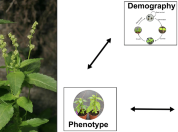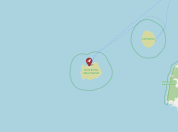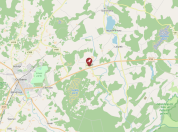Zoeken
Filteren op
Type
Labels
Dossiers
Thema's
Afdelingen
Taal
Active filters
1438 zoekresultaten
Zoekresultaten
-
Botanical records through a social lens
This collaborative project is led by Folgert Karsdorp of the KNAW Meertens Institute, and investigates the social biases and cultural aspects of historical botanical records (that is, citizen science avant la lettre). In collaboration with FLORON, our contribution to this project is to implement a case study that explores historical botanical records from the Netherlands to characterize patterns of distribution and abundance of Asteraceae species in cities through time. We aim to let these historical records inform us about which species are winners and which are losers of the urbanization process. This can provide unique information on the plant traits that mediate successful adaptation to urbanization.
-
ECORAMA – Ecology and evolution of species range margins
This is a collaborative project that is led by John Pannell and Shengman Lyu at the University of Lausanne. The project investigates the genetic, demographic and evolutionary processes that determine species range margins, using Mercurialis annua as a model species. Our contribution to this project is to set up and maintain a field experiment in which experimental plant populations of different admixture histories are monitored for performance at Wageningen, which is at the current distributional range margin of the species.
-
Stora Karlsö
Metadata of the field study (STK-1) at Stora Karlsö (STK), Sweden
-

-
Zeltaleja
Metadata of the field study (ZEL-1) at Zeltaleja (ZEL), Latvia
-
Berzciems
Metadata of the field study (BRZ-1) at Berzciems (BRZ), Latvia
-
Krievrags
Metadata of the field study (KRI-1) at Krievags (KRI), Latvia
-
Restoring and rewilding ecosystems
It is a topical issue and has long been a research interest of NIOO: how do you restore nature? For example, former farmland can be made more suitable for nature again, and areas connected to each other. This approach could also help to mitigate the consequences of climate change. Furthermore, a growing amount of knowledge about rewilding has become available in recent years. It has become clear that, in the long run, rewilding yields strong ecosystems with more biodiversity.
-
Ecosystemen herstellen en verwilderen
Het is een actueel onderwerp en al lang een onderzoeksinteresse van het NIOO: hoe kun je natuur herstellen? Voormalige landbouwgrond krijgt bijvoorbeeld weer een natuurfunctie en gebieden worden met elkaar verbonden. Dit kan ook helpen om de gevolgen van klimaatverandering op te vangen. De laatste jaren komt bovendien steeds meer kennis beschikbaar over ‘rewilding’. Het levert op de lange termijn sterke ecosystemen op met een grotere biodiversiteit, zo blijkt.
-
BiodiversityXL (Centre of Excellence for Netherlands Biodiversity Research)
Naturalis Biodiversity Center, the Netherlands Institute of Ecology (NIOO-KNAW), the Royal Netherlands Institute for Sea Research (NIOZ-NWO) and Westerdijk Fungal Biodiversity Institute-KNAW have launched BiodiversityXL, the Centre of Excellence for Netherlands Biodiversity Research. Of course, Dutch universities are very much involved.
